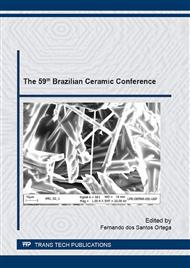p.404
p.410
p.416
p.422
p.427
p.433
p.441
p.447
p.453
Viability of Sugarcane Bagasse Ash as Precursor Material to Solar Absorbers Films
Abstract:
The availability of fossil resources decreases over the years, constituting a problem that needs to be properly treated. In this context, it is necessary the exploration of alternative and renewable sources of energy, particularly the use of solar energy incident on the planet. The aim of this work is to examine the feasibility of the application of sugarcane bagasse ash as a precursor material for obtaining an inorganic polymer that will form the absorber film for use in solar collectors for medium and high temperature. Through mechanical particle size separation of ash and its physicochemical characterization, it was possible to prove that the chemical and mineralogical composition of the raw material is favorable for use in alkaline synthesis Furthermore, the ash particle size large achieved the best results of properties optical and microstructural, favoring its application to obtain films to be applied to selective surface. It was also observed that the metallic copper substrate had the best interaction with the film providing the best results in absorption of ultraviolet visible region.
Info:
Periodical:
Pages:
427-432
Citation:
Online since:
November 2016
Keywords:
Price:
Сopyright:
© 2017 Trans Tech Publications Ltd. All Rights Reserved
Share:
Citation:


